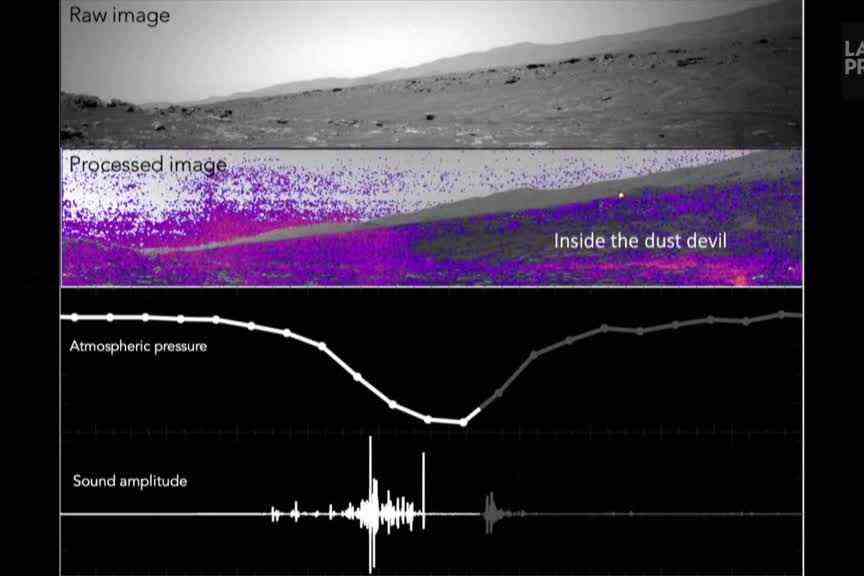(Cape Canaveral) What sound does a dust devil on Mars make?
The microphone of a NASA rover was accidentally turned on as a swirling column of dust passed directly overhead, allowing it to record the din.
The ten-second recording captured not only the sound of 40-kilometer-per-hour gusts of wind, but also the impact of hundreds of dust grains hitting Perseverance.
The recording, the first of its kind, was released on Tuesday.
The sound closely resembles that of an Earth dust devil, but softer since Mars’ thinner atmosphere produces muted sounds and calmer winds, the researchers said.
The dust devil quickly flew over Perseverance last year, which explains the short duration of the recording, said the lead author of the study published by Nature Communications, researcher Naomi Murdoch of the University of Toulouse.
At the same time, the rover’s navigation camera was able to capture images, and its meteorological instruments recorded data.
Dust devils are common on Mars; they had often been photographed in the past, but this is the first time that one has been recorded. This one was of medium size: it was at least 118 meters high, had a diameter of 25 meters, and moved at 5 meters per second.
The microphone recorded the impact of 308 dust grains, Ms.me Murdoch, who helped build the instrument.
Since the SuperCam microphone of Perseverance is only lit for a few minutes every few days, Mme Murdoch said it was “really lucky” that the dust devil appeared at that time, September 27, 2021. She puts the odds of such a coincidence at just 1 in 200.
The same microphone had recorded the first sounds on Mars, namely the Martian wind shortly after its arrival in February 2021. It then captured the sound of the vehicle rolling on Mars and that of its small companion, the Ingenuity helicopter, which s flies away nearby.
He also fulfilled his main mission, that of recording the sound of the lasers with which Perseverance examines Martian rocks.
These recordings allow scientists to study Martian wind, atmospheric turbulence and now dust movement in ways previously impossible, Ms.me Murdoch.
Perseverance look for rocks that would bear signs of life. It has so far collected 18 samples from Jezero Crater. NASA plans to bring these samples back to Earth in ten years.
